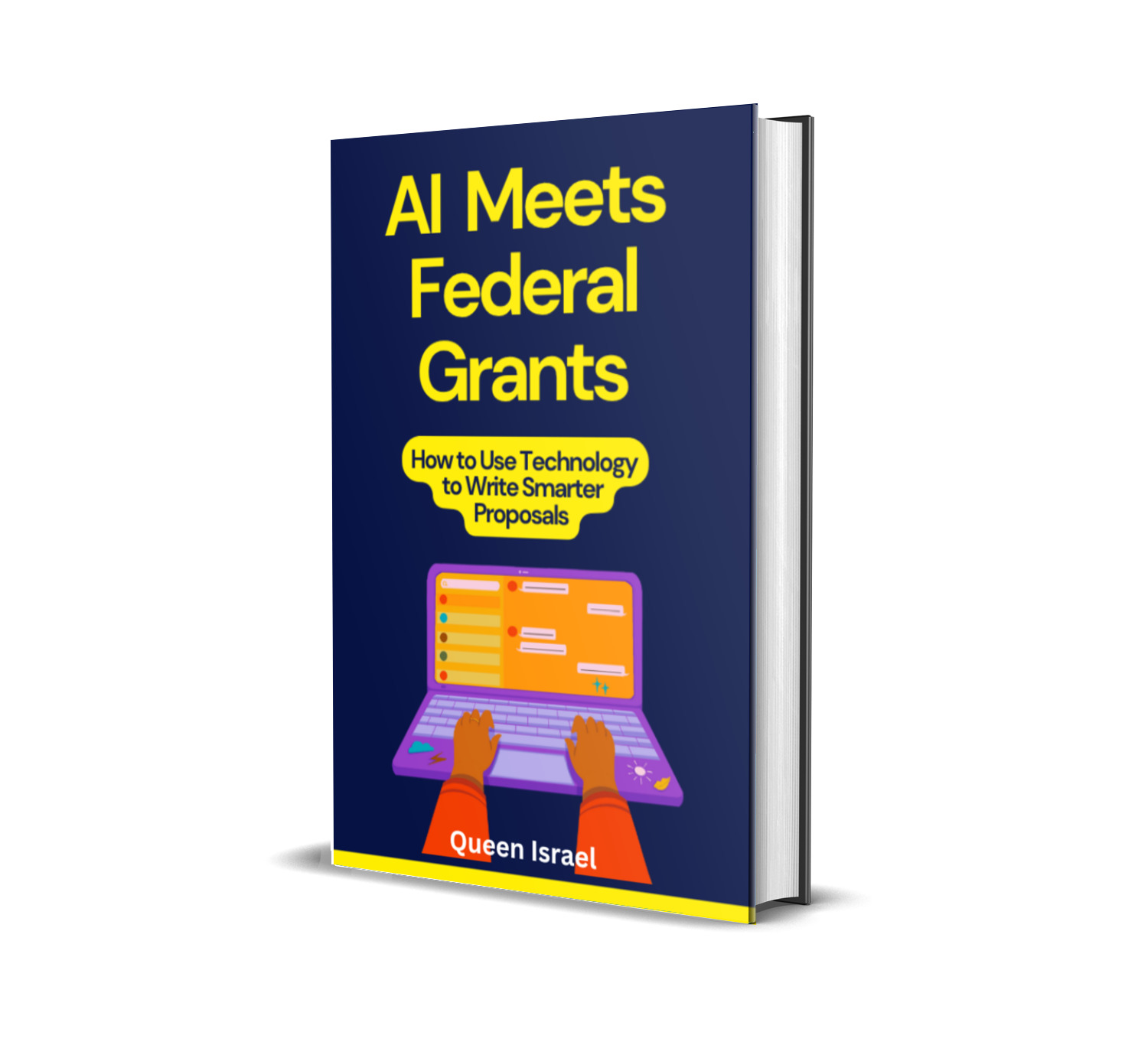When it comes to creating a brighter future for children, one of the most powerful tools available to organizations is child welfare grants.
These grants provide financial support to nonprofits and community organizations that are dedicated to improving the lives of children. From early intervention programs to after-school initiatives and services for at-risk youth, child welfare grants are a lifeline for those working to make a difference.
In this post, we will explore how to find these grants, what they typically fund, and how to increase your chances of securing child welfare grants for your organization. Let’s dive in and explore this vital topic together!
Understanding the Importance of Child Welfare Grants
Child welfare grants are not just about money—they are about creating opportunities, changing lives, and providing a safety net for vulnerable children. These grants support initiatives that tackle issues such as child abuse, neglect, education disparities, and mental health challenges. When used effectively, funding from child welfare grants can have transformative effects on individuals and communities.
Imagine an early childhood education program that gives toddlers from low-income families a solid foundation in literacy and social skills, significantly improving their future prospects. Picture a community center offering safe space and mentorship to at-risk teens, keeping them off the streets and on track for a brighter future. These possibilities are realized through the support of child welfare grants.
Types of Child Welfare Grants in Greater Detail
1. Federal Grants: Federal child welfare grants are available for a wide range of programs and services. Let’s take a closer look:
- Title IV-E Foster Care Program: This program is a critical source of funding for foster care maintenance. It provides financial support that helps states run foster care services effectively, ensuring children in foster care have the resources they need to thrive.
- Early Childhood Education Grants: Federal programs such as Head Start and other early learning initiatives provide grants to support education programs for young children. These programs focus on preparing children from disadvantaged backgrounds for school success by offering enriched learning environments.
- Promoting Safe and Stable Families (PSSF): The PSSF program emphasizes family preservation and reunification. It aims to keep families together whenever possible, reducing the need for foster care and supporting children in a familiar environment. Grant funds are used for counseling, parenting classes, and other family support services.
2. State and Local Grants: State and local governments tailor their grant programs to meet the specific needs of their communities. Here are some examples:
- State Child Welfare Funding Programs: States like California, Texas, and New York have dedicated funds for child welfare. These grants might support emergency shelters, family counseling, or youth development programs. For instance, California’s Department of Social Services offers various grant opportunities to enhance child welfare services locally.
- County and Municipal Grants: On a smaller scale, counties and cities often issue grants to address hyper-local issues. A municipal grant might support a community garden project that provides fresh food to low-income families, which has a direct impact on child nutrition and well-being.
3. Private Foundations: Private foundations play a major role in funding innovative and impactful child welfare programs:
- The Bill & Melinda Gates Foundation: Known for its work in education and health, this foundation provides significant funding for child welfare initiatives, including those that address digital literacy and equitable access to educational resources.
- The Annie E. Casey Foundation: Focused on improving the lives of children, this foundation supports evidence-based programs that address foster care, family stability, and community-based child welfare services.
- The W.K. Kellogg Foundation: This foundation invests heavily in the health, education, and overall well-being of children. Grants often focus on creating positive community environments and reducing educational inequity.
4. Corporate Giving: Corporate philanthropy is another significant source of child welfare funding:
- Corporate Social Responsibility (CSR) Programs: Companies like Target, Walmart, and Coca-Cola allocate funds specifically for community projects. These funds might support after-school programs, mentorship initiatives, or technology in classrooms—each indirectly or directly related to improving child welfare.
- Employee Matching Gifts: Some corporations offer matching gift programs where donations from employees are matched by the company, amplifying the impact of even small community contributions toward child welfare programs.
Navigating the Process of Finding Child Welfare Grants
Finding the right grants requires research, organization, and persistence. Here are expanded strategies:
1. Use Comprehensive Grant Databases:
- GrantStation: This tool offers a vast database of grant opportunities. It allows organizations to search for child welfare grants by various criteria such as funding size, deadlines, and eligibility.
- Foundation Directory Online by Candid: This resource provides detailed information about foundations, including their giving patterns and specific grant opportunities in the child welfare sector.
2. Regularly Check Government Websites:
- Grants.gov: This portal is the primary source for federal funding opportunities. It is updated frequently with new child welfare grants, deadlines, and application guidelines.
- State and Local Government Sites: Monitoring state department of social services or local government portals can reveal unique grant opportunities specific to your region.
3. Join Networks and Communities:
- Consider joining professional networks like the Grant Professionals Association or local nonprofit groups. These communities often share insider tips, upcoming grant opportunities, and resources.
- Networking with other professionals in the child welfare space can lead to partnerships, sharing of best practices, and collaborative grant applications, which may increase the likelihood of success.
4. Keep Your Subscription Lists Updated:
- Newsletter Subscriptions: Subscribing to newsletters, such as the Grant Writing Academy Newsletter, can be incredibly beneficial. You receive timely information on grant deadlines, expert tips on writing proposals, strategies for better submissions, and templates that can save time.
What Child Welfare Grants Typically Fund – Expanded Insights
1. Foster Care Programs:
- Financial Support for Foster Families: Many grant programs provide stipends, respite care, and specialized training for foster parents. This support reduces the financial strain on families and improves the quality of care for children.
- Therapeutic Services: Grants can fund mental health and behavioral health services for children in foster care. These services might include trauma-informed therapy, art therapy, and other innovative approaches to help children process their experiences and heal.
2. Early Childhood Education:
- Preschool and Pre-K Programs: Funding from child welfare grants can enable the development of curriculum and educational materials that are age-appropriate, culturally relevant, and inclusive.
- Family Engagement Initiatives: These initiatives encourage parental involvement in early learning, which research has shown to significantly boost a child’s academic and social success.
3. Child Abuse Prevention:
- Community Awareness Programs: Grants may fund campaigns that raise awareness about child abuse, teaching communities how to recognize the signs and report concerns.
- Support Hotlines and Reporting Services: Establishing and maintaining confidential hotlines for children and families in crisis can be funded through grants, providing immediate assistance and resources.
4. Mental Health Services for Children:
- School-Based Mental Health Programs: Child welfare grants can fund hiring of counselors in schools, training for teachers on mental health first aid, and the establishment of safe spaces for students to talk about their concerns.
- After-School and Summer Programs: These programs often include therapeutic components such as group therapy sessions, mindfulness training, and social skills development tailored to children who have experienced trauma or instability.
5. Youth Programs and Services:
- Career and Technical Education (CTE): Some grants support vocational training programs for teens, equipping them with skills to secure employment, which can break cycles of poverty and instability.
- Mentorship Programs: These programs pair at-risk youth with positive adult role models. Grants may cover training for mentors, program coordination, and evaluation measures to track success.
Data-Driven Insights and the Impact of Child Welfare Grants
Having a data-driven approach when applying for grants can help demonstrate your program’s effectiveness and its potential for long-term impact. Here are some key statistics and data sources that strengthen the case for funding:
- National Child Abuse and Neglect Data: According to the U.S. Department of Health & Human Services, there were an estimated 618,000 victims of child abuse and neglect reported in 2020 alone. This highlights the ongoing need for programs that address and prevent abuse.
- Educational Outcomes: Research from the National Institute for Early Education Research (NIEER) shows that children who participate in quality early childhood education programs are less likely to drop out of high school and more likely to pursue higher education. This underscores the importance of investing in early education through grants.
- Mental Health Statistics: The Centers for Disease Control and Prevention (CDC) reports that mental health conditions such as anxiety and depression affect approximately 20% of children and adolescents in the U.S. Effective mental health programs funded by grants can help reduce these numbers.
By citing such statistics and including relevant data, your grant proposals can paint a vivid picture of the needs within your community and the potential impact of your programs. Always provide sources and references to lend credibility to your application.
Building a Strong Grant Proposal: Strategies and Tools
A well-crafted grant proposal is essential in securing child welfare funding. Let’s expand on how to create one:
1. Research the Funder Thoroughly:
- Dive into the funder’s website, read their annual reports, and study their funded projects. Understand what types of programs they have supported in the past and what outcomes they value most.
- Tip: Create a spreadsheet or a database of potential funders, noting their priorities, application deadlines, and any notes on successful proposals.
2. Define Clear, Measurable Objectives:
- When writing your proposal, set clear goals for what your program aims to achieve. For example, reduce the incidence of child neglect in your community by 20% over three years, or improve reading levels among participants by one grade level.
- Use SMART criteria: Specific, Measurable, Achievable, Relevant, and Time-bound objectives help funders understand exactly what you plan to do and how success will be measured.
3. Create a Narrative That Connects:
- Tell a compelling story that connects readers emotionally to the children you serve. Use anecdotes and real-life examples, making it clear how grant funding will make a real, tangible difference.
- Conversational Tone: Write as if you are speaking directly to a friend, using a warm, approachable voice that builds trust and credibility.
4. Budget Planning and Justification:
- Provide a detailed budget that outlines all projected costs. Include explanations for each expense, showing that you’ve carefully thought through how to use funds effectively.
- Tools such as Excel templates or budgeting software can help create clear, professional budgets.
5. Evaluation and Sustainability Plan:
- Include a robust plan for evaluating the success of your program. This might involve surveys, focus groups, and data collection techniques that track progress over time.
- Outline steps to ensure the program can continue beyond the grant period, such as diversifying funding sources, building partnerships, or creating revenue-generating activities.
Common Pitfalls to Avoid
While applying for child welfare grants, avoid common mistakes that could jeopardize your success:
- Lack of Focus: Tailor each proposal to the specific grant. Avoid using a generic template without customization.
- Overpromising: Be realistic about what your program can achieve with the requested funds.
- Poor Writing: Proofread and edit your proposal multiple times. Clarity and professionalism go a long way.
- Ignoring Guidelines: Always follow the funder’s instructions precisely. Missing a single requirement can disqualify your application.
Leveraging the Grant Writing Academy Newsletter
Navigating the complexities of grant proposals can be challenging, but you don’t have to do it alone. By subscribing to the Grant Writing Academy Newsletter, you gain access to a wealth of resources tailored to help organizations succeed in securing child welfare grants. Here’s what you can expect:
- Tips and Strategies: Learn insider tips on how to craft compelling narratives, manage budgets effectively, and build strong partnerships.
- Templates and Tools: Access practical templates for proposals, budgets, and evaluation plans that you can customize to your needs.
- Case Studies and Success Stories: Read about how other organizations have successfully secured funding and learn from their experiences.
- Exclusive Webinars and Workshops: Participate in training sessions led by seasoned grant writers and experts in the field of child welfare.
- Updates on New Opportunities: Stay informed about the latest grant opportunities and funding trends in the child welfare sector.
Subscribing is simple, and the insights you gain could be the difference between a successful grant application and a missed opportunity.
Personal Stories and Impact Narratives
Connecting with your audience through personal stories can make a compelling case for why child welfare funding is so essential. Consider incorporating stories like:
“When our after-school program received a child welfare grant, we were able to hire additional counselors and expand our services to include art therapy and tutoring. One young participant, Sarah, struggled with anxiety and schoolwork. Through our program, Sarah not only improved her grades but also learned coping skills that have changed her life. Today, she is graduating high school with confidence and dreams of becoming a teacher, hoping to give back to her community.”
Such stories highlight the transformative power of grants and make your writing engaging and relatable.
Conclusion:
Child welfare grants are more than just financial resources—they are investments in our children’s future. By understanding the landscape of available grants, learning how to write compelling proposals, and utilizing resources like the Grant Writing Academy Newsletter, you can significantly increase your organization’s success in securing funding.
It’s time to take action. Your dedication to improving the lives of children can be supported through strategic grant funding.
Subscribe to the Grant Writing Academy Newsletter today to access tips, strategies, templates, and tools that will enhance your success rates. Together, we can create safe, nurturing environments where every child has the opportunity to thrive.
Remember: Every child deserves a chance at a bright future, and through informed, purposeful grant writing, you can be the catalyst for change.
Additional Resources and Support
a) Expand Your Knowledge
The grant writing field is always evolving. Keep learning and improving your skills to stay competitive.
Recommended Resources:
- Request for Proposal Success: How to Write Proposals That Win: Learn the techniques and strategies to create standout proposals.
- Tech Startup Funding Secrets: Navigating Grants for Maximum Growth: Perfect for those in the tech sector looking to leverage grants for scaling.
- Grant Proposal Guide for Environmental Projects: Tailored for environmental initiatives seeking to secure impactful funding.
- The Ultimate Guide to Federal Grant Applications: Techniques for Success: Master the complexities of federal grants with actionable insights.
Explore More Books Here
b) Invest in Expert Guidance
Want to fast-track your growth and achieve even more success?
Join one of our mentorship programs for tailored advice and support:
Mentorship Programs:
- 3-Month Mentorship: The Foundation Builder: A short-term plan to refine your grant writing skills and win your first (or next) grant.
- 6-Month Mentorship: The Proposal Pro: Dive deeper into strategies, proposal reviews, and funding plans.
- 1-Year Mentorship: The Funding Champion: Build long-term success with comprehensive guidance, unlimited reviews, and exclusive resources.
C) Book a One-on-One Consultation
Sometimes you just need personalized advice to tackle challenges or fine-tune your strategy. Let’s work together to solve your unique grant writing challenges.






